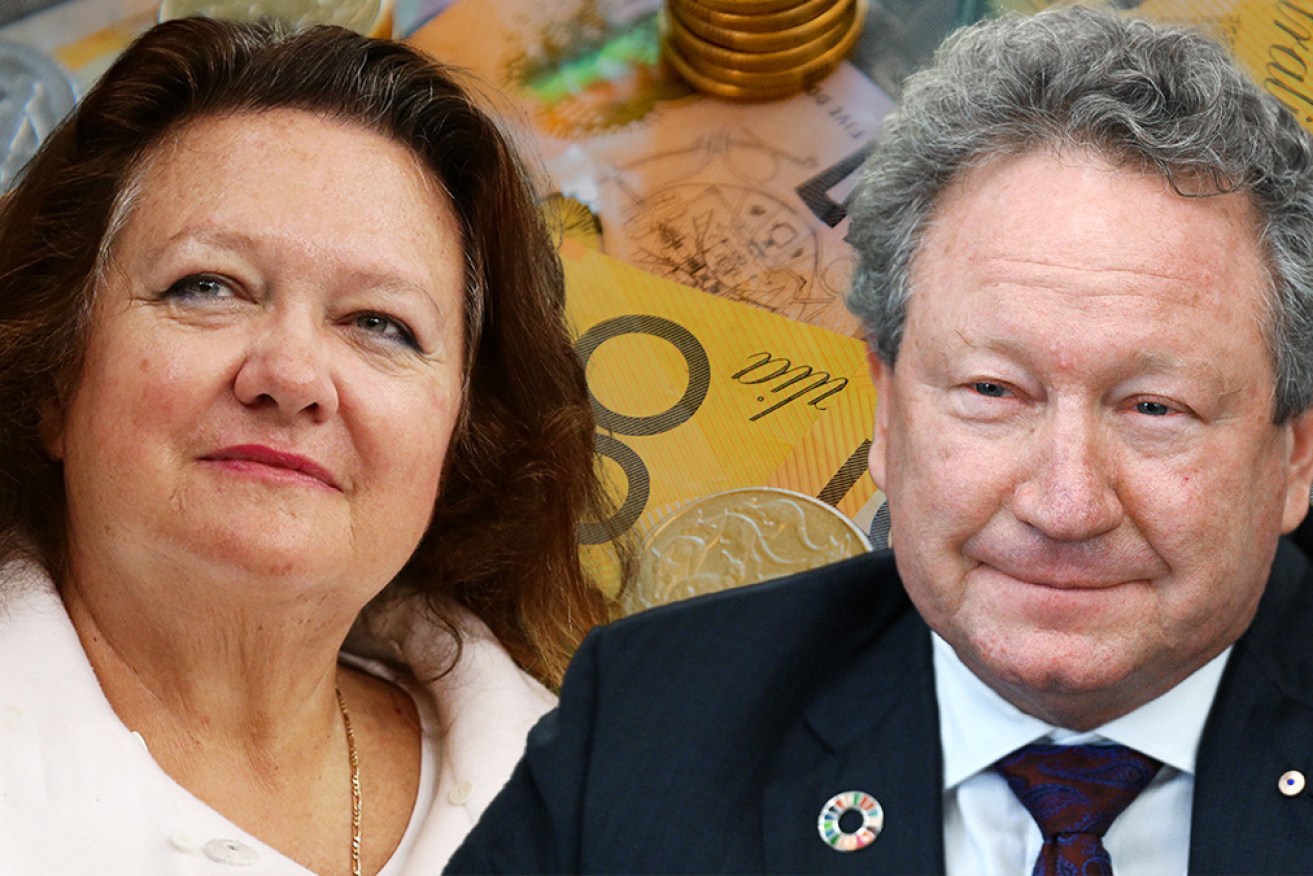Oxfam highlights inequality as world’s 10 richest men more than double wealth during COVID


WA's Gina Rinehart and Andrew Forrest have had mixed fortunes this year, according to Bloomberg. Photo: TND
COVID-19 has turbocharged the vast fortunes of the world’s billionaires while causing untold harm for the world’s poor.
The world’s richest 10 men have more than doubled their wealth since the start of the pandemic, while 99 per cent of the global population have been left worse off, according to international charity Oxfam.
When businesses were forced to close and workers confined to their rooms, central banks slashed interest rates to record lows and pumped trillions of dollars into financial markets to help keep the global economy afloat.
But much of that economic stimulus ended up flowing into company coffers and lining the pockets of their billionaire owners.
Now, economists have renewed their call for Australia’s unemployment benefit JobSeeker to be lifted above the poverty line, and Oxfam has pushed for the Australian government to introduce a wealth tax on the mega-rich.
Reversing progress
Released on Monday, Oxfam’s report found that Australia’s 47 billionaires – a list that includes Andrew ‘Twiggy’ Forrest, Anthony Pratt and Gina Reinhardt – were now worth $255 billion.
Globally, the top 10 richest men doubled their wealth to $US1.9 trillion ($2.6 trillion).
Oxfam public engagement chief Rod Goodburn said the jump in inequality went against recent trends.
“Until the pandemic, the work going on in the development space has actually reduced inequality, particularly over the last 25 years,” said Mr Goodburn, noting this was clear to see when looking at the rise of China and India.
But over the past two years inequality worsened due to “massive injections of finance from central banks into economies”.
Although this funding was important in keeping economies afloat, it had the effect of boosting corporate balance sheets and share prices.
- Read – The rich grew richer: Elon Musk’s $167 billion windfall puts fellow billionaires’ gains to shame

Across the globe inequality jumped during the pandemic. Photo: Getty
And the surge in the fortunes of the super wealthy was dramatic.
“The world’s small elite of 2755 billionaires has seen its fortunes
grow more during COVID-19 than they have in the whole of the last
14 years – 14 years that themselves were a bonanza
for billionaire wealth,” Oxfam’s report said.
Meanwhile, Oxfam claimed that 99 per cent of the global population were worse off because of COVID-19 – though its methodology has been called into question.
Mr Goodburn said 99 per cent were worse off because in the developing world “there are many countries that don’t have age pensions, unemployment support or proper child care”.
Social safety net
Some of these support measures were temporarily increased in Australia during the pandemic.
But although these measures supported incomes, they suffered from major design flaws, according to independent economist Nicki Hutley.
“[Such programs] could have been tidied up a bit better along the way. Some companies took the [JobKeeper] payment when they didn’t actually need it,” Ms Hutley said.
The JobSeeker payment was boosted by $550 a fortnight from March 2020 to September 2020 but was then reduced as the economic situation improved.
“We should have just kept it there,” Ms Hutley said.
“It actually brought people back into a situation where they were no longer living below the poverty line and made a huge difference in stimulating the economy.”
At the other end of the spectrum, property owners and people with company shares saw their wealth skyrocket as huge cuts to central bank interest rates boosted asset prices across the board.
“The wealthier you are, the wealthier you get as asset values rise,” Ms Hutley said.
Oxfam’s wealth tax
Oxfam suggests a wealth tax should be introduced in Australia to deal with rising inequality, which has been linked to a greater chance of catching COVID-19.
“In Australia, if you are poor, you are 2.6 times more likely to die from COVID than if you are middle class or wealthy,” Mr Goodburn said.
A wealth tax would not just be used to boost the government’s coffers, it would fund social infrastructure that would in turn improve the lives of poorer Australians.
“[The money could be spent on] everything from health care to education to child care and the social safety net,” Mr Goodburn said.
He said Oxfam’s wealth tax would raise $30 billion a year – an amount sufficient to cover half the costs of achieving the WHO’s goal of vaccinating 70 per cent of the world population by mid-2022.
But not everyone agrees with wealth taxes.
Ms Hutley said they risked eroding incentives “by double taxing people”.
Though she said the tax system should be made more progressive.
“I’m very much opposed to the third tranche of the income tax cuts,” she said.
From 2024, those cuts will eliminate the 37 per cent tax bracket and see everyone earning between $45,000 and $200,000 a year paying the same marginal tax rate of 30 cents in the dollar.










